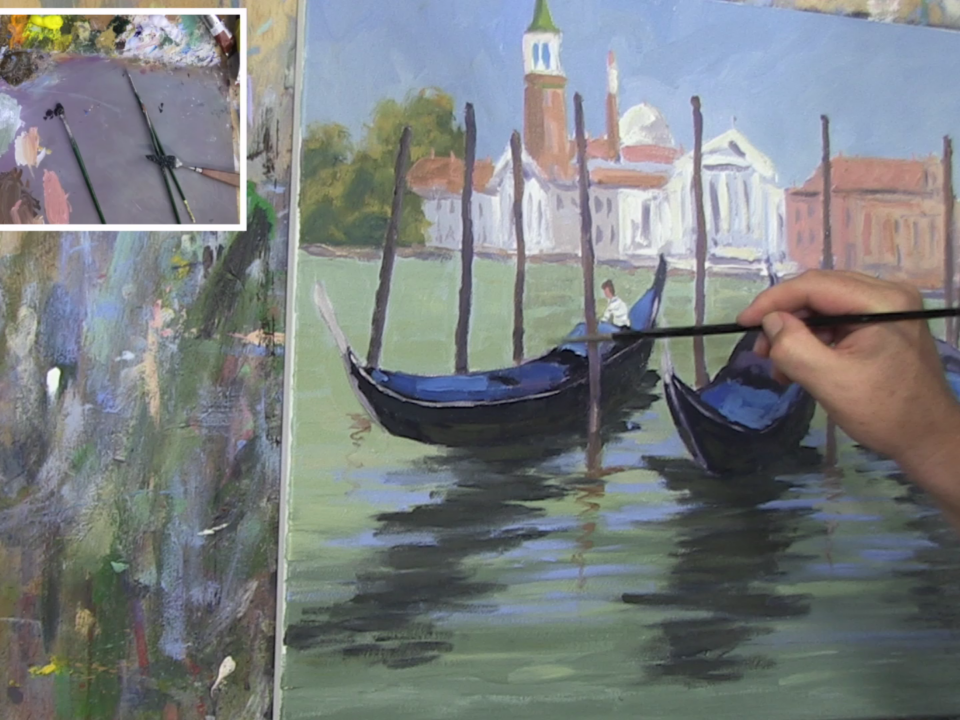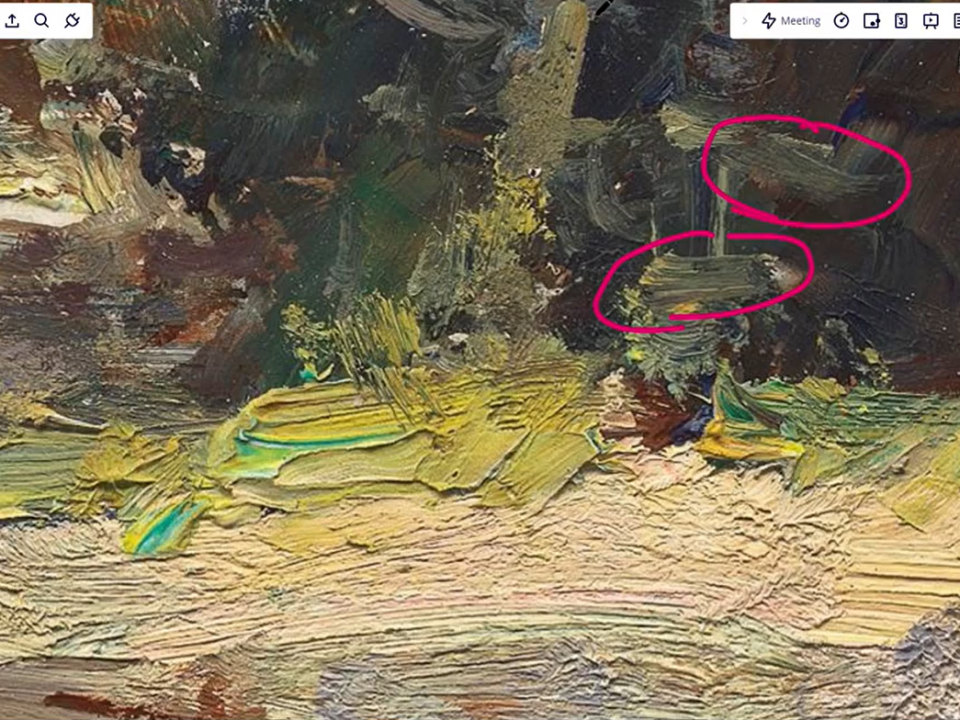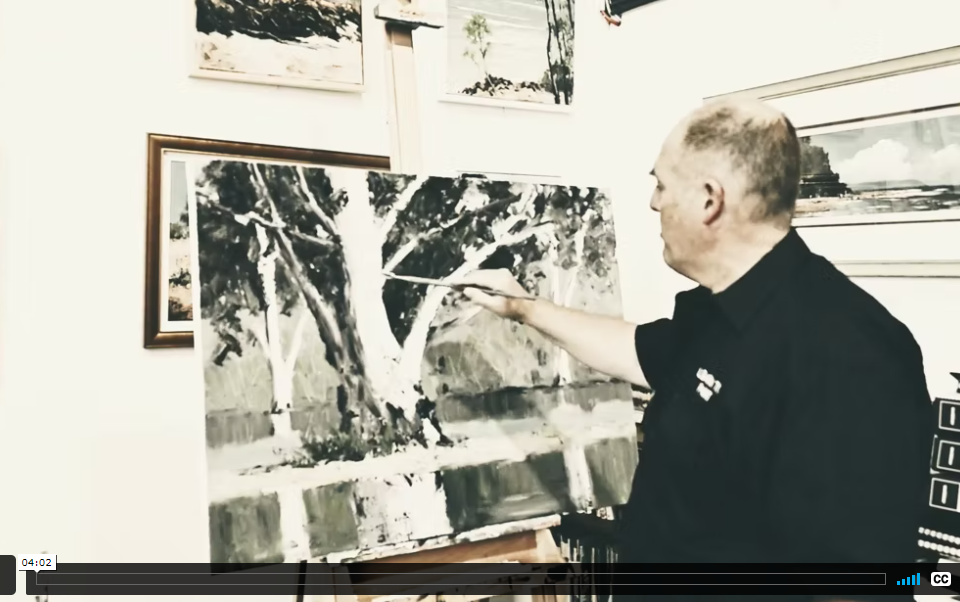Starting An Art Teaching Business
June 28, 2017Learning From Every Painting
July 4, 2017Acrylic Abstract Painting Tutorial
In this Acrylic Abstract Painting Tutorial I am going to share with you a step by step breakdown of a terrific abstract landscape. This is a project from the new ‘Abstract Painting Level 1‘ course which provides a great introduction to abstract painting.

The Abstract Painting Level 1 course is now available for those who want to further explore how to paint abstract paintings in acrylics.
When you join the course you will get the full videos to this project outlined below.
Register For The Abstract Painting Video Course Here
Hurry – Early Bird Price Ends Saturday 1st July
Now lets look at the project and break it down into easy to follow steps for you.
This abstract painting project is being done in acrylics and I am painting on a 16″ x 20″ stretched canvas. I only use one brush for the painting which is a 1″ geso brush with bristle hairs.

In the first step above I establish a basic drawing. The colours are Cerulean Blue and Titanium White mixed together which will also be our sky colour. As you can see the drawing is very simple just placing in the hill line, larger tree and smaller tree.
I did the drawing quickly and spontaneously. The key is just to identify where the big shapes will go in your painting rather than trying to draw in every detail.

Then I use the same mix and start to block in the sky.
I want to create lots of movement and life in the sky. So I vary up my brush strokes and use a lot of variety. Also you will notice I am using a lot of paint. This is the key to getting acrylics to paint like oils … use a lot of paint and it will stay wet longer giving you more time to manipulate it.
The other advantage of using a lot of paint is that it allows you to create nice textures in your brush marks.

As I am using a cool blue for the sky I decided I wanted to contrast this with some warmth in the sky as well.
The mix I have on the palette is Alizarin Crimson + Yellow Ochre + Titanium White. I then work this into the lower part of the sky thinking it will create a great effect against the greens of the trees and the hillside.

Note that I also work this warmer colour up into the blue section and pull some of the blue sky down into the warmer section of the sky. This is important as it connects the two areas into one integrated sky.
At this point I had too much water in the sky so decide its best to leave it there and come back to it later.

Moving on to the trees I start to block in the shadow tone for both the large tree and smaller tree.
This is simply a dark mix of Ultramarine Blue with Alizarin Crimson.

With the trees blocked in I move to the block in of the hill side.
My thinking is that I want the hillside to have lots of vibrant green tones when its finished. As red is the compliment of green I have found it is a good idea to block in with a red earthy tone. When you place the greens over the top they create a harmonious vibrant effect.
Here I am blocking in the hillside with Alizarin Crimson and Yellow Ochre mix.

After allowing time for everything to dry off I come back and start to develop the green into the hillside.
I want the horizon line to be the brightest green to pull the eye into the painting.
The mix here is Cadmium Yellow with Pthalo Green. Notice I shift between being more on the yellow side then back to more on the green side.

It is important to also vary your brush strokes.
I have a lot of horizontal strokes running down the hill but I vary that with some vertical strokes as well. And using the edge of the brush I flick up some grass like effects against the shadows of the trees.
Notice how the earthy red under painting is peeking through the more vibrant green grasses.

Then its time to create highlights and texture into the trees.
I do this with a variety of greens mixed with both my warm and cool blues, warm and cool yellows and alizarin crimson.
The key here is the brush strokes. I just use the bristle hairs on the edge of the brush and swish the brush around to create random yet controlled strokes to resemble foliage on the trees.

Now that I feel I have the trees working well I switch my focus back to the sky.
By this stage the water that was in the sky has now dried off so I can safely work back into it. I start by working the warm sky tone back into the lower part of the sky and strengthen it here and there.

Then I take the cooler blue and work it also back into the sky strengthening the parts of the sky that need a stronger cooler blue. And I also work some of it into the warm tone in the lower part of the sky.
Overall I am happy with the finished result as you can see here.

This is a terrific painting project to try. It is a good contemporary abstract painting and as you can see in the above photo the finished painting would look great in most people’s homes.
I definitely recommend having a go at this one as its a lot of fun and you can put your own style into it.
If you want to see the full video version of this project and variations of it then …
Register For The Abstract Painting Video Course Here
It is a comprehensive course that introduces the idea of abstract painting in acrylics for beginners.




